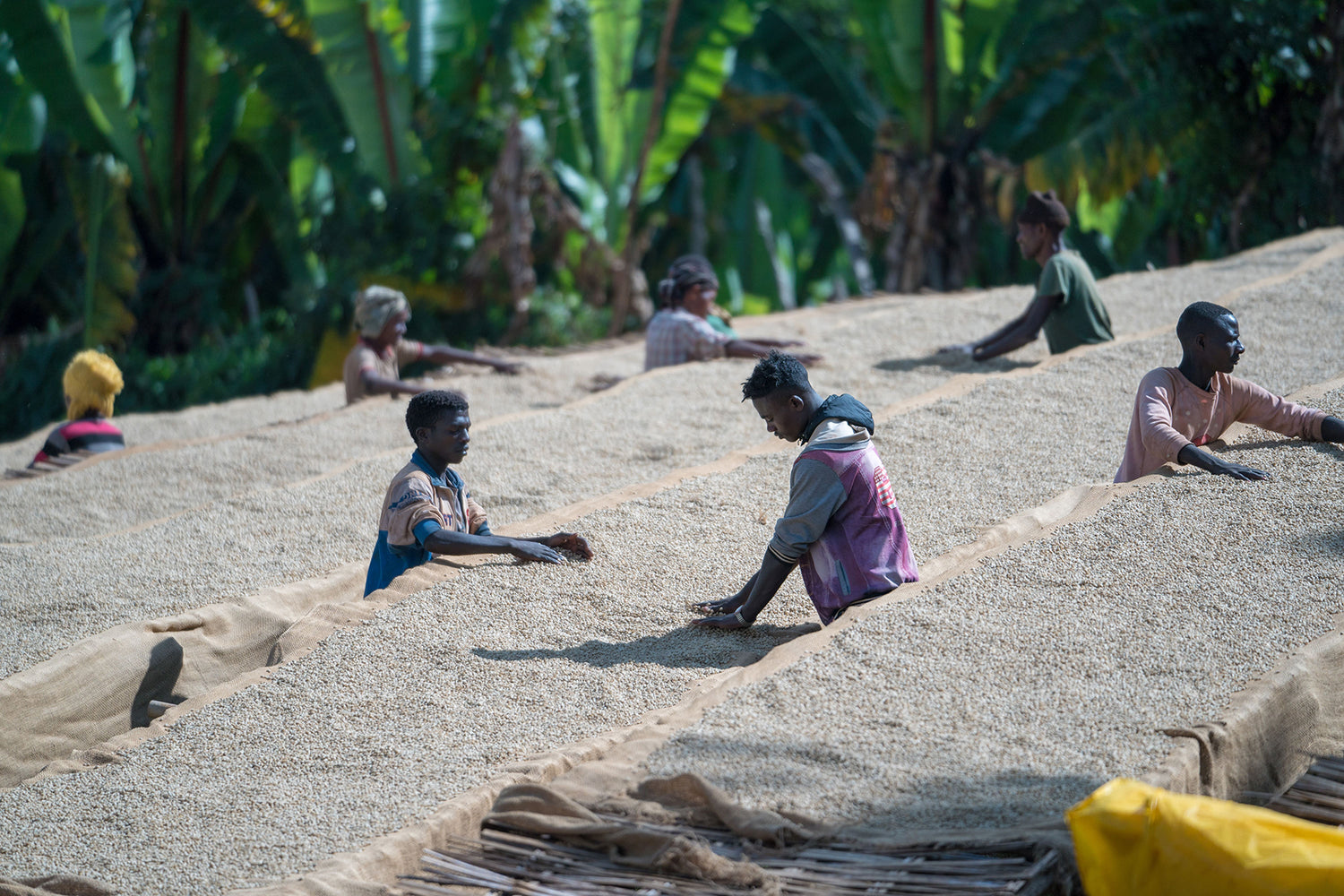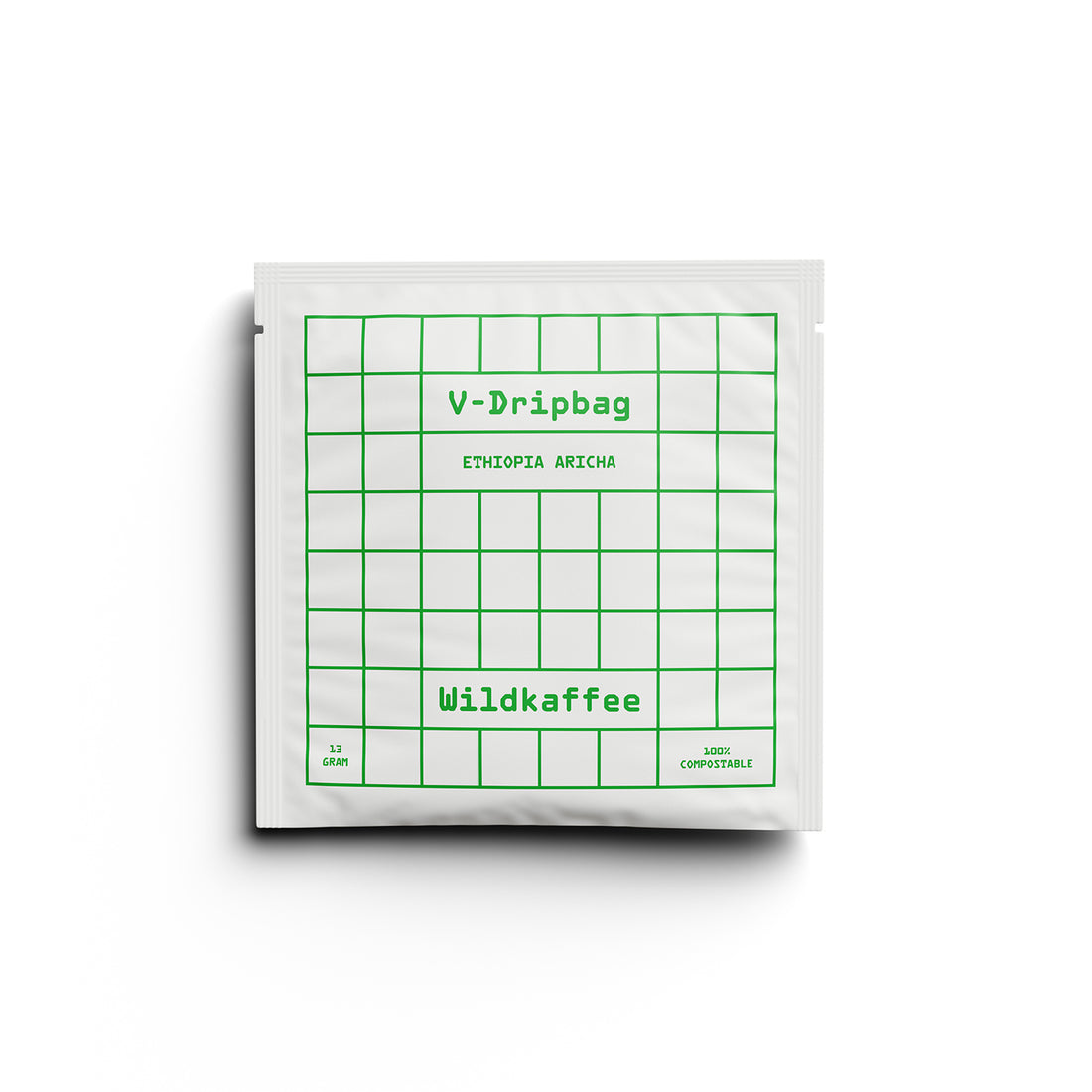Ethiopia Sidamo vs Yirgacheffe: Cup Profiles, Cupping and Buying Guide
Classification: Ethiopia's coffee regions at a glance
Ethiopia is considered the cradle of Arabica coffee—diverse, small-scale, and aromatically unique. Among the most famous designations of origin are Sidamo (often spelled Sidama) and Yirgacheffe. While Sidamo is a broad designation of origin for coffees from the southern highlands, Yirgacheffe refers to a specific zone in the Gedeo region, whose coffees are traditionally prized for their floral clarity and tea-like elegance. In both regions, smallholder farmers predominantly produce hand-harvested Ethiopian Arabica , often in agroforestry systems with shade trees and high biodiversity.
For specialty coffee enthusiasts, these origins are key concepts: Sidamo represents breadth and variety, Yirgacheffe represents precision and lightness in the cup. Both are ideal starting points for exploring the spectrum of Ethiopian cup profiles .
Sidamo vs. Yirgacheffe: Terroir, altitude, microclimates
The southern Ethiopian highlands are characterized by cool nights, mild days, and long ripening periods—a recipe for complex flavors . Sidamo covers a wide range of villages, elevations, and microclimates (approximately 1,500 to 2,200 m). Yirgacheffe is typically higher (approximately 1,800 to 2,200+ m) and cooler, with subtle gradations in slopes, valleys, and exposures, which favors the characteristic floral signature.
Soil types, rainfall, harvest window
- Soils: Mainly deep, volcanic Nitisols (reddish-brown), rich in minerals, well-drained; often loamy-sandy with a high organic content.
- Rainfall: Approximately 1,200–2,000 mm/year, distributed between the main and secondary rainy seasons; Yirgacheffe often has a particularly even moisture distribution.
- Harvest window: Yirgacheffe approximately October–January; Sidamo approximately November–February. Shipments usually begin in spring; arrivals in Europe often occur April–August.

Varieties and processing
Ethiopia's genetic diversity is a treasure: local landraces, selected heirlooms and research selections shape the profile as much as the processing of coffee .
Heirloom/Landraces, Selection, Lot Transparency
Varieties are often grouped together as "Ethiopian Heirloom"—a collective term for numerous local genotypes. In Yirgacheffe, for example, Kurume (Kudhume), Dega, and Wolisho are common; breeding programs include JARC selections such as 74110 and 74112. The more transparent a lot (e.g., specific farm, cooperative, washing station, microlot number), the more consistent the expectations for the cup. Look for:
- Lot details: farm/cooperative, elevation, variety list, harvest date.
- Quality information: Grading (G1/G2 for washed, G3/4 for naturals), cup score, moisture/water activity.
- Traceability: Contract model, exporter, dry mill information if applicable.
Washed, Natural, Honey, Anaerobic : Influence on the cup
- Washed: Emphasizes clarity, floral, and citrus notes—a classic Yirgacheffe signature. Light to medium in body, with high aromatic definition.
- Natural (sun-dried): More intense fruit (berries, stone fruit), more sweetness and body, with a risk of fermented notes if not properly processed. Very common in Sidamo.
- Honey: Middle way – more sweet than washed, yet still quite clear, depending on the mucilage content.
- Anaerobic/Carbonic: Experimental profiles (tropical fruit, spice), distinctly accentuated sweetness/body; requires precise roast and brew adjustments.
" Washed vs. natural" is particularly prevalent in Ethiopia : same origin, different processing – and the cup has a new coffee personality.

Cup profiles in comparison
What distinguishes Sidamo and Yirgacheffe from a sensory perspective? The focus is on the subtlety of the acidity, the type of fruit, the floral expression, and the clarity.
Aroma and fragrance
- Yirgacheffe: Often jasmine, bergamot, and lemon blossom; tea-like and ethereal. Often washed with delicate citrus and white floral aromas; naturals occasionally add peach/apricot and red berries.
- Sidamo: A wide range – from citrus and stone fruit (apricot, peach) to berries (blueberry, strawberry) and spices (Earl Grey, cardamom). Naturals are at their fruitiest.
Acidity , sweetness, body
- Yirgacheffe: Bright, precise acidity (lemon, lime), high sweetness, light to medium body. Very clear structure, especially in washed lots.
- Sidamo: Acidity from medium-light to juicy, depending on the microclimate; often fuller sweetness and slightly more body, especially in natural/honey profiles.
Aftertaste and clarity
- Yirgacheffe: Long, clean finish with floral persistence; "tea-like" aptly describes the texture.
- Sidamo: Long finish with fruity components; naturals can be creamy and velvety, while washed Sidamos are lively and balanced.
Cupping at home: step by step
Structured cupping helps to make differences tangible – ideal for directly comparing Yirgacheffe and Sidamo.
Water, ratio, grind, protocol
- Water : Target values approximately 70–120 ppm total hardness, 30–50 ppm alkalinity. Filtered or treated water is preferable.
- Ratio: SCA standard: 8.25 g coffee to 150 ml water (approx. 55 g/L). Alternatively, 60 g/L for a slightly more intense assessment.
- Grind size: Significantly coarser than filter, about medium-coarse (comparable to Kalita/V60 "large").
- Temperature: 92–94 °C infusion temperature.
- Check roast date; cup 5–14 days after roasting.
- Grind 12 g per cup, smell dry aromas.
- Pour in 200 ml of water and let it steep for 4 minutes.
- Break the crust, assess the aroma, remove the foam.
- Slurp several times after 8–12 minutes as the temperature drops; note aroma, acidity, sweetness, body, balance, aftertaste, and clarity.
Tip: Cupping "blindly" (marking cups) prevents bias – only reveal which coffee is "who" at the end.

Brew tips by profile ( V60 , Kalita, AeroPress, Espresso)
- V60 (washed Yirgacheffe): 15 g coffee, 250 g water, 94 °C, 1:16.6. Bloom 30–40 s (2–3 cans), then 2–3 pulses for 2:30–3:00 min. Goal: Clarity, floral top notes, lively acidity.
- Kalita 155 (Natural Sidamo): 18 g, 270 g, 92–93 °C, 1:15. Bloom 30 seconds, gentle pulses. Grind slightly finer than V60 for more consistent extraction. Goal: emphasize sweetness and body, control fruit.
- AeroPress (fruity natural): 15 g, 230 g, 92 °C, 2:00 min, fine filter grind, 1 reverse turn, 30 s press. Result: Juicy fruit, round body, mild acidity.
- Espresso (Yirgacheffe washed): 18 g in, 45–54 g out (1:2.5–1:3), 27–34 seconds, 92–93°C. Fine enough for clarity, not choked. Expectation: floral, citrus elegance instead of chocolate.
Fine-tuning: Lighter roasts usually require slightly higher water temperatures, longer contact time, or slightly finer grinds. Naturals benefit from moderate extraction to avoid overripe fermentation notes.
Buyer's guide: quality metrics, price-performance, roasting recommendations
- Quality signals: Cup score (e.g., 85–90+), grading (G1/G2), moisture content 10–12%, water activity approximately 0.45–0.60. Clear, unambiguous origin information is a plus.
- Value for money: Yirgacheffe G1 washed is often more expensive than Sidamo G2, but offers floral finesse. Sidamo Naturals often deliver spectacular fruit at moderate prices—a "wow" experience for beginners.
- Roast profiles: For filter coffee , light to medium roast ; for espresso, light to medium roast with a little more time to develop texture. Don't over-roast Yirgacheffe washed—the magic lies in its clarity.
- Trust: Roasters who transparently share roast and brew notes, varieties , and lot information are the best partners for specialty coffee .
Seasonality and freshness: import window, resting, shelf life
Harvest windows in Ethiopia typically fall between November and February, with arrivals in Europe between April and August. Coffees are particularly vibrant immediately upon arrival. Green coffee ideally rests briefly before roasting; roasted coffee also benefits from a rest period.
- Roasting date: For filter coffee, usually 3–10 days resting, for espresso coffee 7–21 days – depending on the roasting degree and density.
- Shelf life: Flavor peaks in the first 6–8 weeks; freezer-safe portions can preserve freshness for months.
- Storage : Cool, dry, dark; store in airtight valve bags to minimize oxygen and moisture penetration.
Common errors and troubleshooting
- Not enough clarity in the Yirgacheffe: Check water (too hard?), grind finer, increase temperature, reduce turbulence during pour-over.
- Overripe/fermented notes in Natural Sidamo: Grind coarser, lower temperature, increase brew ratio to 1:16–1:17; change fresh filter, check flow.
- Flat cup: Increase the dose slightly, extract a little longer overall, but not more than 3:30 min (filter).
- Espresso too sour: Extract longer (higher beverage weight), grind slightly finer, increase brewing temperature.
- Bitter notes: Extract for a shorter time, grind slightly coarser, use hot water not exceeding 96°C, and ensure uniform bed geometry.
Conclusion: Which choice suits your taste?
If you're looking for floral, tea-like clarity with citrus brightness, there's no getting around Yirgacheffe—especially as a washed lot. If you're looking for juicy fruit, more sweetness, and texture, Sidamo (preferably in Natural or Honey) offers a wide range of styles. It's best to get two small bags, cup them side by side, and test them with identical brew parameters. This way, you'll learn how terroir and processing shape the cup—and find your sweet spot.




